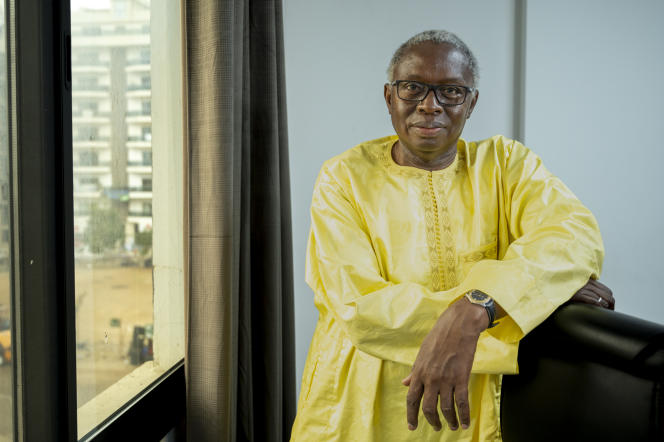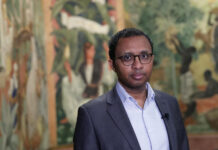A new multidisciplinary research path, health ecology takes into account environmental transformations and the evolution of lifestyles to understand the emergence and evolution of pathologies. “All diseases have an ecological, environmental, societal and geographical determinism”, underlines the Senegalese professor Lamine Gueye, neurologist and neurophysiologist doctor who directs the international research laboratory Environment, Health, Societies.
It was created in 2009 on the initiative of the National Center for Scientific Research (CNRS), in partnership with the Cheikh-Anta-Diop University of Dakar, the National Center for Scientific and Technological Research of Burkina Faso, the University of Sciences, Techniques and Technologies of Bamako (Mali), and Gaston-Berger University of Saint-Louis in Senegal.
Although each of the three countries is working on a specific theme – Mali studies parasites and malaria, Burkina Faso pollution, and Senegal chronic non-communicable diseases – all share the same approach which consists of decompartmentalizing specialties, to put in common the reflections and the means. Within the laboratory, doctors, pharmacists, dentists or public or community health specialists thus work hand in hand with their colleagues in the humanities and social sciences – sociologists, anthropologists or geographers – as well as with scientific specialists environment in chemistry, ecology or biology.
In my hospital practice, I realized the growth of chronic non-communicable diseases like diabetes and hypertension. Their share has become increasingly important in relation to infectious diseases. I wanted to understand the high prevalence of these pathologies in Senegal: 25% to 30% of the population in urban areas and 20% to 25% in rural areas.
Thanks to the multidisciplinary approach of the ecology of health, we were able to highlight the cultural dimension of the advance of these diseases, but also of their management. Indeed, we noted a lack of knowledge of these pathologies by the populations, which results in late diagnoses and therefore a high risk of serious complications. The social and economic burden can become very heavy for families if it turns into kidney, cardiovascular or brain disease. The care is then very expensive for an already deprived population.
We have seen a change in lifestyle, especially at the urban and peri-urban level. The demographic transition and urbanization are accompanied by a change in dietary and therefore health behaviors among populations who have experienced a rural exodus. Arrived in the city, they adopt a new mode of nutrition which is much more fatty, sweet, salty and overcooked. They are abandoning plant-based food that was available in rural areas. Added to this is the change in activity associated with arriving in the city, which promotes a sedentary lifestyle and obesity, while in rural areas, people spend more energy.
These chronic non-communicable diseases are indeed gaining ground even if the profile of the populations in rural areas has not changed. People stay mobile and thin so why are high blood pressure and diabetes increasing? We have several hypotheses, first concerning the rapid circulation of foods such as sugary drinks which are now widely available in rural areas. The teams in our laboratory have studied the food supply which is becoming globalized and reaching rural areas. For high blood pressure, we study the salinity of the water. As water becomes scarcer due to drought linked to climate change, it becomes increasingly concentrated in salt. This is a line of research that is still ongoing: teams are studying the impact of salinity on the body. It can also be genetic as there is strong inbreeding in rural areas.
Usually, doctors do their research in hospital sectors, but this is necessarily biased since what happens in hospitals is not what happens in neighborhoods or rural areas. The ecosystem influences the evolution of diseases and their management. Today, when we conduct a health study, we go out into the field with a multidisciplinary team. It is also necessary to take into account cultural factors and behaviors to understand the evolutions. For example, our teams in Mali are trying to understand why parasitic diseases such as malaria, schistosomiasis or leishmaniasis, which were more important in rural areas, have slipped towards urban areas.
We have a very strong partnership with the Great Green Wall agency. Our competent teams in biology work on the plants that best adapt to reforestation, that resist climate change and the scarcity of rain. We help evaluate the best solutions for reforestation in order to influence reforestation strategies.
The first impact comes from our scientific work and the publications that we make available to public authorities who need them, such as the Ministry of Health. The Great Green Wall agency also uses our results to develop its strategies. Our specialized malaria team has become a reference team for malaria prevention and vaccination, working with the World Health Organization. The team involved in pollution in Burkina Faso produces reports that are transmitted to the authorities. It is based in particular on the analysis of data collected by the air quality management center, which is under the supervision of the Ministry of the Environment. This makes it possible to alert and develop strategies adapted to the level of pollution.
Companies are sometimes interested in our studies. This gives us the means to finance field research which is expensive, while public aid is still insufficient. It is important for companies to support African researchers who are currently underfunded. They are still too few to do so, often preferring to finance actions in the social field and not yet enough research.














